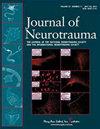探索创伤性脑损伤的突触通路:跨表型基因组学方法。
IF 3.9
2区 医学
Q1 CLINICAL NEUROLOGY
引用次数: 0
摘要
创伤性脑损伤(TBI)是导致死亡和残疾的全球主要原因,但目前缺乏有效的治疗方法来促进康复。突触重塑被认为是影响创伤性脑损伤后疗效的机制之一。我们试图利用通路富集工具和全基因组基因型数据研究影响突触维持的共同机制是否在创伤性脑损伤和其他神经精神疾病之间存在共性,目的是突出新的治疗目标。我们采用了一种综合方法,将全基因组关联研究(GWAS)数据与通路和基因组富集分析相结合。我们将基于文献综述的方法与 Reactome 数据库驱动的方法相结合,以确定创伤性脑损伤结果中与突触相关的相关通路,并评估与突触相关病理生物学机制有牵连的疾病的共同关联,这些疾病包括阿尔茨海默病 (AD)、精神分裂症 (SCZ)、重度抑郁症 (MDD)、创伤后应激障碍 (PTSD)、注意缺陷多动障碍 (ADHD) 和自闭症谱系障碍 (ASD)。我们使用 MAGMA 及其扩展工具 e-MAGMA 和 H-MAGMA 进行了基因和通路水平的富集分析,然后使用孟德尔随机化(MR)研究了潜在的因果关系。在所测试的 98 个通路中,有 32 个通路在所纳入的条件中显著富集。在创伤性脑损伤结果中,我们发现有五条通路出现了明显的富集:"突触前烟碱乙酰胆碱受体"(p-value = 0.0003)、"突触后烟碱乙酰胆碱受体"(p-value = 0.0003)、"高钠渗透性突触后乙酰胆碱烟碱受体"(p-value = 0.0001)和 "乙酰胆碱结合和下游事件 "途径(p-value = 0.0003)。这些关联凸显了胆碱能和血清素能系统在创伤后恢复中的潜在参与。其中三条通路在创伤后应激障碍和精神分裂症之间具有共通性,这表明两者可能存在病理生理学上的共性。在这项研究中,我们利用比较和整合基因组学方法,在具有相同突触机制的脑部疾病中探索创伤后脑损伤结果的病理生理学。我们的研究结果表明了创伤性脑损伤结果与突触通路之间的关联,以及与其他神经精神疾病的病理生物学重叠。本文章由计算机程序翻译,如有差异,请以英文原文为准。
Exploring synaptic pathways in traumatic brain injury: a cross-phenotype genomics approach.
Traumatic brain injury (TBI), a global leading cause of mortality and disability, lacks effective treatments to enhance recovery. Synaptic remodeling has been postulated as one mechanism that influences outcomes after TBI. We sought to investigate whether common mechanisms affecting synapse maintenance are shared between TBI and other neuropsychiatric conditions using pathway enrichment tools and genome-wide genotype data, with the goal of highlighting novel treatment targets. We leveraged an integrative approach, combining data from Genome-Wide Association Studies (GWAS) with pathway and gene-set enrichment analyses. Literature review-based and Reactome database-driven approaches were combined to identify synapse-related pathways of interest in TBI outcome, and to assess for shared associations with conditions in which synapse-related pathobiological mechanisms have been implicated, including Alzheimer's disease (AD), schizophrenia (SCZ), major depressive disorder (MDD), post-traumatic stress disorder (PTSD), attention deficit hyperactivity disorder (ADHD) and autism spectrum disorder (ASD). Gene and pathway-level enrichment analyses were conducted using MAGMA and its extensions, e- and H-MAGMA, followed by Mendelian Randomization (MR) to investigate potential causal associations. Of the 98 pathways tested, 32 were significantly enriched in the included conditions. In TBI outcome, we identified significant enrichment in five pathways: "Serotonin clearance from the synaptic cleft" (p-value = 0.0001), "Presynaptic nicotinic acetylcholine receptors" (p-value = 0.0003), "Postsynaptic nicotinic acetylcholine receptors" (p-value = 0.0003), "Highly sodium permeable postsynaptic acetylcholine nicotinic receptors" (p-value = 0.0001), and "Acetylcholine binding and downstream events" pathways (p-value = 0.0003). These associations highlight potential involvement of the cholinergic and serotonergic systems in post-TBI recovery. Three of those pathways were shared between TBI and schizophrenia, suggesting possible pathophysiologic commonalities. In this study we utilize comparative and integrative genomic approaches across brain conditions that share synaptic mechanisms to explore the pathophysiology of TBI outcome. Our results implicate associations between TBI outcome and synaptic pathways as well as pathobiologic overlap with other neuropsychiatric diseases.
求助全文
通过发布文献求助,成功后即可免费获取论文全文。
去求助
来源期刊

Journal of neurotrauma
医学-临床神经学
CiteScore
9.20
自引率
7.10%
发文量
233
审稿时长
3 months
期刊介绍:
Journal of Neurotrauma is the flagship, peer-reviewed publication for reporting on the latest advances in both the clinical and laboratory investigation of traumatic brain and spinal cord injury. The Journal focuses on the basic pathobiology of injury to the central nervous system, while considering preclinical and clinical trials targeted at improving both the early management and long-term care and recovery of traumatically injured patients. This is the essential journal publishing cutting-edge basic and translational research in traumatically injured human and animal studies, with emphasis on neurodegenerative disease research linked to CNS trauma.
 求助内容:
求助内容: 应助结果提醒方式:
应助结果提醒方式:


